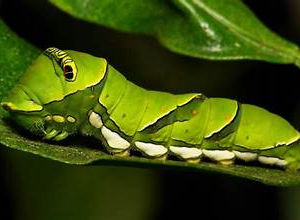top of page
Images contributed by Finnish
photographer Hannu Kontkanen..
Butterfly populations are a very good indicator of the health of an area's ecosystem !!
Also known as the Asian Swallowtail or the Chinese or Japanese Yellow Swallowtail.
Papilio xuthus is found in urban, suburban, woods and orange orchards.
They typically fly from May to August.
They mate multiple times in their lives, leading to greater genetic diversity among their young.
They are preyed upon by a host of organisms, including the Tree Cricket (Oecanthus longicauda), Ant (Lasius niger), and Wasps (Polistes and Trogus mactator).
Males use both physical and visual cues to attract mates during the breeding season.
During the mating season, Asian Swallowtail males fly through the foliage of trees in search of a mate. If a male encounters a female resting on a plant with open and horizontal wings, it approaches her and examines her by contacting his forelegs with the tips of her wings. Also, males use visual cues to conduct the mating ritual and are particularly attracted to closely spaced yellow patches on female wings.
Most females of the Asian Swallowtail butterfly mate more than once in their lives. This behavior is typical of many other Swallowtail butterflies including P. glaucus, P. helenus and P. protenor. (Multiple matings leads to an increased genetic diversity of Swallowtail offspring. In addition, multiple matings allow females to produce a greater number of eggs, of which there can be up to thirty.)
Females of the species regularly mate with multiple partners. After mating, females use habitat and food quality to determine where they will oviposit their eggs.
There are 2 broods per year. The first is from April - June and the second is July - August. In a warm summer it is possible to have a 3rd generation in the southern parts flying in September.
Xuthus Swallowtail is a mid sized, yellow, prominently tailed butterfly. It has a wingspan of 90 to 110 mm.
Its normal color pattern consists of a black pattern on a yellow background. Wing coloration is sexually dimorphic, with females showing broader proximal marginal bands in the hindwing. Blue iridescent and orange scales separate the black bands on the hindwing. The black bands also run in stripes of varying thickness along the forewing.
Young caterpillars mimic bird feces and have a white and brown spot on their heads. As they mature, caterpillars develop a light green body color with brown spots.
The Xuthus Swallowtails are seasonally dimorphic which mean the chrysalides formed in the fall and the adults which emerge from them are quite a bit smaller than the summer brood.

Diet: larvae feed on plants in the genus Dictamnus,
Zanthoxylum and Evodia.
Diet: adults nectar on a variety of flowers.
Avg. wingspan: 9 to 11 cm / 3.5 - 4.3"
Family: Papilionidae


The single biggest threat to butterfly survival is habitat destruction!!
bottom of page




